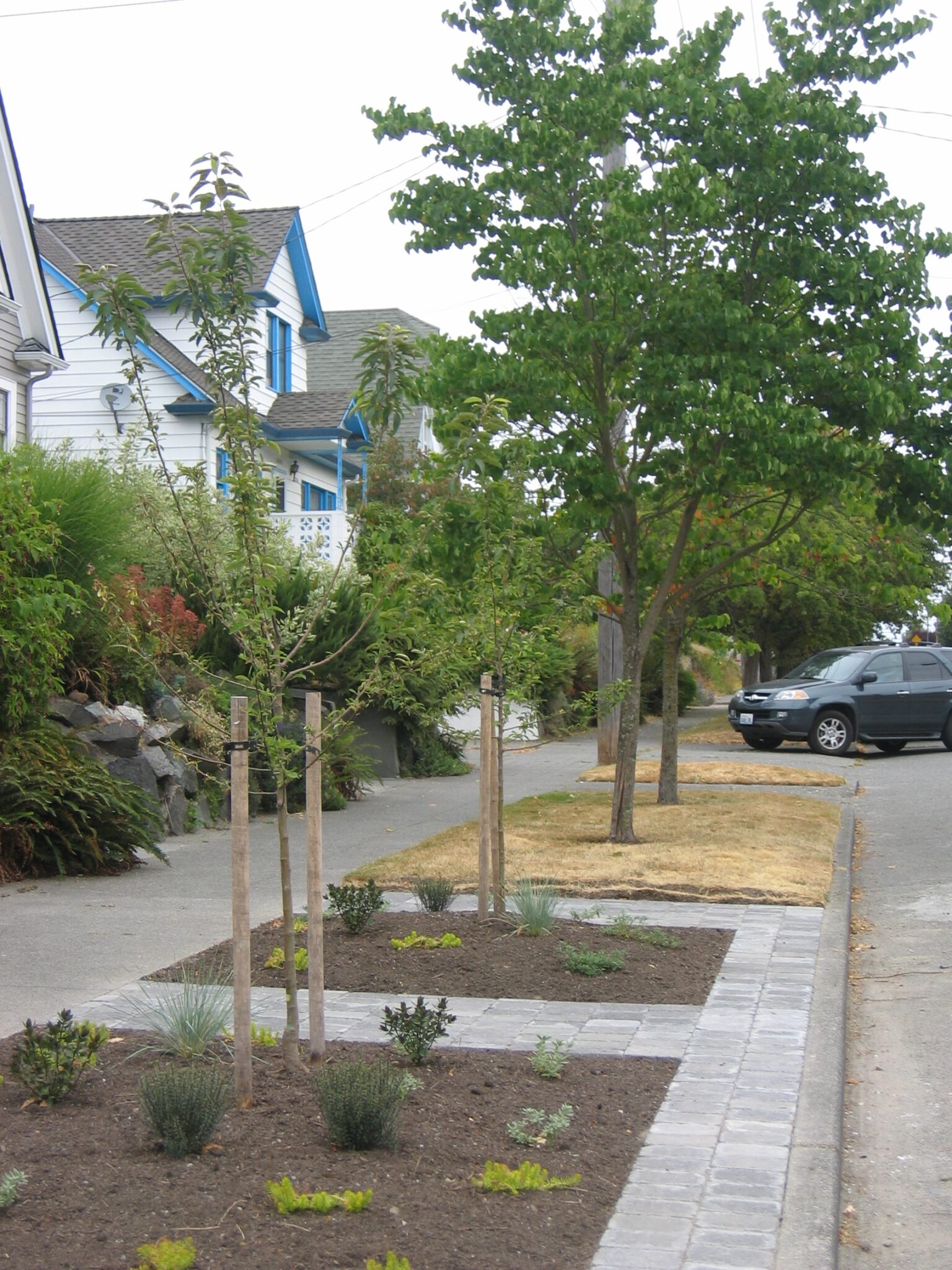
 Tree-lined streets enhance our neighborhoods and the trees provide a host of benefits to our community, such as cleaner air and water. But trees that live along streets, or the “public right of way (ROW),” require some special care and protections. On April 29, 2013, City Council approved updated code requirements for maintaining trees in the public right of way. The last major update was in 1961!
Tree-lined streets enhance our neighborhoods and the trees provide a host of benefits to our community, such as cleaner air and water. But trees that live along streets, or the “public right of way (ROW),” require some special care and protections. On April 29, 2013, City Council approved updated code requirements for maintaining trees in the public right of way. The last major update was in 1961!
Changes made to the code
Over 70 percent of an estimated 140,000 street trees are privately owned. The code changes address this and other issues (see the handy table below for a summary) that affect all trees in the ROW (both publicly and privately owned), by specifically regulating:
- Protection, preservation and maintenance of trees
- Restrictions on tree removal
- Requirements for tree replacement
- Tree pruning requirements and qualifications for private tree companies
- Enforcement & penalties
The code changes provide for protection and preservation of existing, mature trees in order to meet the canopy cover goals of the Urban Forest Management Plan. Because these changes add a new, professional qualification requirement, businesses and homeowners have until January 1, 2014 before any sanctions are applied. The Seattle Department of Transportation (SDOT) will hold a series of outreach events and educational forums to give the local tree service providers the information they need to become compliant with the new code requirements.
What’s Seattle’s most common street tree? How many new street trees have been planted since 1992? Visit the Department of Transportation’s site to learn the answers and check out the online tree map. Interested in learning more about trees and how you can get involved? Be sure to visit the Seattle reLeaf site for one easy place to find it all.
|
|
Old Ordinance |
New Code Section/Title |
New Ordinance |
| Tree Protection | Scope of Authorization requires persons, utilities, & construction companies working in the ROW to preserve trees but provides too little detail on how to accomplish this. | Tree Protection |
3. Prohibits topping, spurring, and attaching signs or other objects. 4. Prohibits placement or storage of construction materials adjacent to trees |
| Permitting | Requires permits to plant, prune or remove street trees. No requirement to replace trees | Permits |
|
| Tree Maintenance Responsibilities | Does not spell out who is responsible for maintenance of street trees | Tree Maintenance Responsibilities |
|
| Arborist Certification | Does not require any specific qualifications for companies performing work on ROW trees or standards for work performed by them | Arborist Certification |
|
| Penalties and Fines | No penalties are specified for illegal tree work that damages or destroys non-SDOT owned ROW trees | Penalties |
|